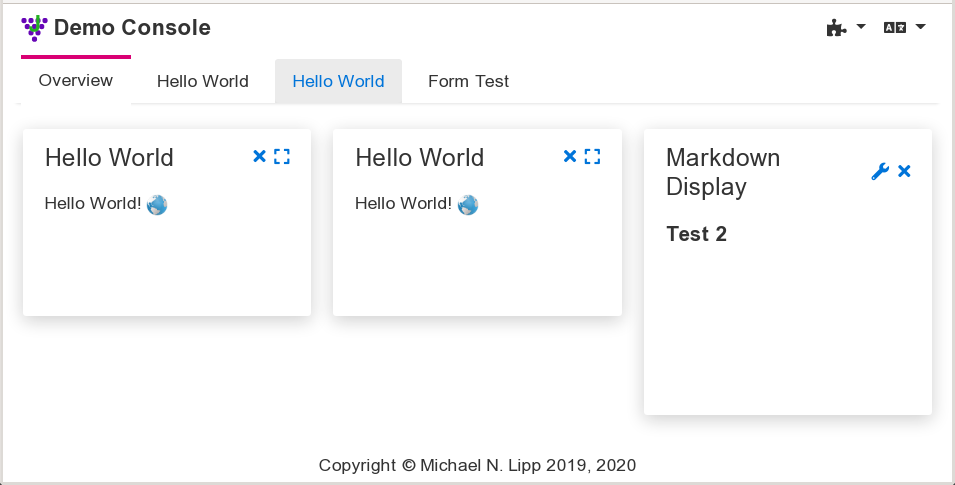JGrapes
JGrapes Web Console
A JGrapes Web Console is a single page application (SPA) provided by several components from the JGrapes framework. The design is highly modular and allows the adaption of the web console to different purposes.

(A live demo configuration of a console is available at demo.jgrapes.org.)
A JGrapes Web Console consists —from the user’s point of view— of a fixed frame with configurable content. The frame provides some means to add content (typically by using a dropdown menu) and to configure global settings such as the locale.
The content of the frame is provided by web console display components or “conlets” for short. These components typically support a summary or preview display that can be put on an overview panel in a dashboard style and a large view that is supposed to fill the complete frame.
Tabs or a menu in a side bar can be used to switch between the overview panel(s) and the large views of the different conlets.
The architecture of the web console could roughly be classified as a micro service driven micro frontend (with run-time integration via JavaScript), though it favors a common approach to styling for all components, which is unusual for most micro frontend architectures.
The Javadoc explains the architecture in detail and provides you with the information required to build your own console and components.
